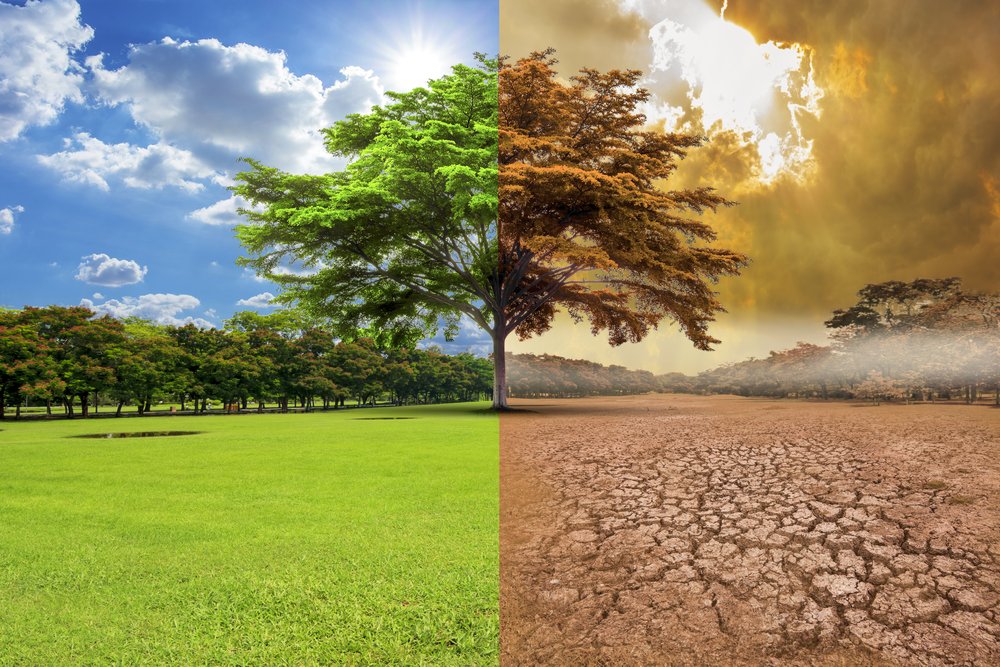Just when you thought 2020 can’t get any more terrible, here comes shocking climate-related news. Earth just recorded its hottest year since reliable records began in the mid-1800s. Based on the most trusted temperature-tracking agencies of our world, 2020 is on track to be the hottest year since the past 200 years. It broke the hottest year record set in 2016.
But that’s not what’s most alarming. Here’s another fact: all of the 10 warmest years occurred in the last decade. In fact, 9 out of 10 hottest years occurred since 2005, with every year almost breaking the record (except for 2011). Let’s take a look at some of these climate change data and statistics:
Record High Surface Temperatures
Based on global surface temperature records by NASA, NOAA, Berkeley Earth, and ECMWF, surface temperature increased by 0.9C since the year 1970. This shows a warming rate of around 0.18C per decade.
Knowing the size and heat capacity of our world’s oceans, it would take a humongous amount of heat to actually raise the planet’s average yearly surface temperature for even just a few point Celsius high. So if you think a 0.2-degree increase is small, that’s actually the opposite. This increase means there is so much trapped heat on our planet already. And this heat is driving both regional and seasonal temperatures forward.
This year many months have also set new record high temperatures. NOAA also found that three massive land areas had their warmest year. This includes Europe, Asia, and the Gulf of Mexico.
Greenhouse Gas Concentrations at Peak
The first nine months of the year recorded an increase of concentration in our planet’s major greenhouse gases including CO2, nitrous oxide, and methane. According to the report by the American Meteorological Society, global warming power is now 43% stronger than it was three decades ago while greenhouse gases reached record levels this year.
This increase is largely driven by climate change and human emissions from agriculture, fossil fuels, and land use. The most destructive greenhouse gases which currently trap heat in our atmosphere are CO2 (responsible for 50% of the increase in “radiative forcing”). Second, comes methane which is 29%, and third are other carbon gases at 16% (carbon monoxide, black carbon, and halocarbons).
Greenhouse gases are measured in parts per million, parts per billion, or parts per trillion. One part per million is equivalent to one drop of water diluted into 13 gallons of liquid.
Arctic Sea Ice Second-Lowest Summer Minimum
The arctic sea ice minimum marks the day each year when the sea ice is at its lowest. Arctic sea ice minimum often occurs by the end of the summer melting season from March to September. But because of the longer melting season, sea ice minimum has been occurring more later this year.
Arctic sea ice is second-lowest since it has been since the summer of 2020. The data is recorded by polar-observing satellites which began in the late 1970s. Analysis of satellite data by NASA and the National Snow and Ice Data Center shows that 2020 minimum was reached on September 15 this year with a measurement of 1.44 million square miles.
Our arctic sea ice is actually what keeps the earth’s poles cool and balances the world’s climate. Scientists also think it’s what’s keeping us safe from dangerous global warming events. However, the more the arctic sea ice is lost in summer, the more dark ocean surface is exposed. According to climate change experts, this heats up the ocean faster which results in violent and deadly typhoons and hurricanes.
Strong Hurricane and Typhoon Season
This year we have seen the strongest typhoon and the most active Atlantic hurricane season. Experts know the connection between the La Nina and El Nino, and its effect on hurricane frequency. The stronger the warming during El Nino, the more active the hurricane season too.
Now that La Niña is underway, a colder and stormier winter season is expected in the northern hemisphere. According to the World Meteorological Organization (WMO), La Niña will last until next year affecting surface temperatures and storm patterns in many parts of the world. The world has also experienced the strongest typhoons this year, Typhoon Goni which broke the record of Typhoon Haiyan.
How Can Green Technology Help with Global Warming?
Global warming affects us and everything on our planet. In the last fifty years, we have experienced the most rapid changes in our climate.
In the last decade, the world has experienced the two most deadly and violent storms, the unstoppable rising seawater level and the global rise of temperature. We’ve also seen the extinction of many species which are brought sudden expansion or shrinkage of biodiversity for both plants and animals.
Green technologies that encourage recycling and reducing waste can be a potential solution to our seemingly insurmountable environmental and climate problem. Policy-makers and regulators worldwide must aggressively make green tech a priority for the coming years if we want to save the planet. If we all held hands and focused our attention on environmental issues, there might be a chance that we can prevent our dark and devastating future.











[…] Global warming is a threat many years now, but as the North Pole’s ice melting rapidly, a solution’s emergence is more than a necessity now. It is an increasing problem creating anxiety -at least- to countries worldwide and the society in general and is endangering the health and the environment. One way -and a vast weapon – to fight against global warming is the so-called green technologies. […]
[…] the threat of global warming increases, we see climate change and sustainability efforts back on the radar. Now that our future […]
[…] impact. It does not produce any harmful substances or greenhouse gases that contribute to global warming. Green energy can also be harvested almost everywhere. This will mean that countries wouldn’t […]
[…] of the challenges in farming is monitoring the weather that greatly affects farming. Due to global warming, there is a rapid change in weather patterns. With this, farming activities that include irrigation […]
[…] offset the negative effects of increased carbon dioxide and global warming, we need to have a sustainable food system. We need to start considering our depleting resources. […]
[…] Global warming is continuously causing disastrous natural events on our planet. From the melting of glaciers, rising ocean levels, to horrifying wildfires, these events are all caused by the trapped gases in our atmosphere which causes our planet to warm. […]
[…] GHG emissions from ships which is very unfortunate considering how much the industry contributes to global warming. However, the EU has made some baby steps starting by ordering stricter environmental standards. […]
[…] Wind power does not emit any form of greenhouse gases, unlike fossil fuels. Turbines generate electricity through the power of the wind. It is a safe, clean, and renewable energy source. This is very important in the context of global warming. […]
[…] activities to protect the environment and fight against global warming are increasingly popular across all areas. Architecture is an aspect where significant improvements […]
Comments are closed.